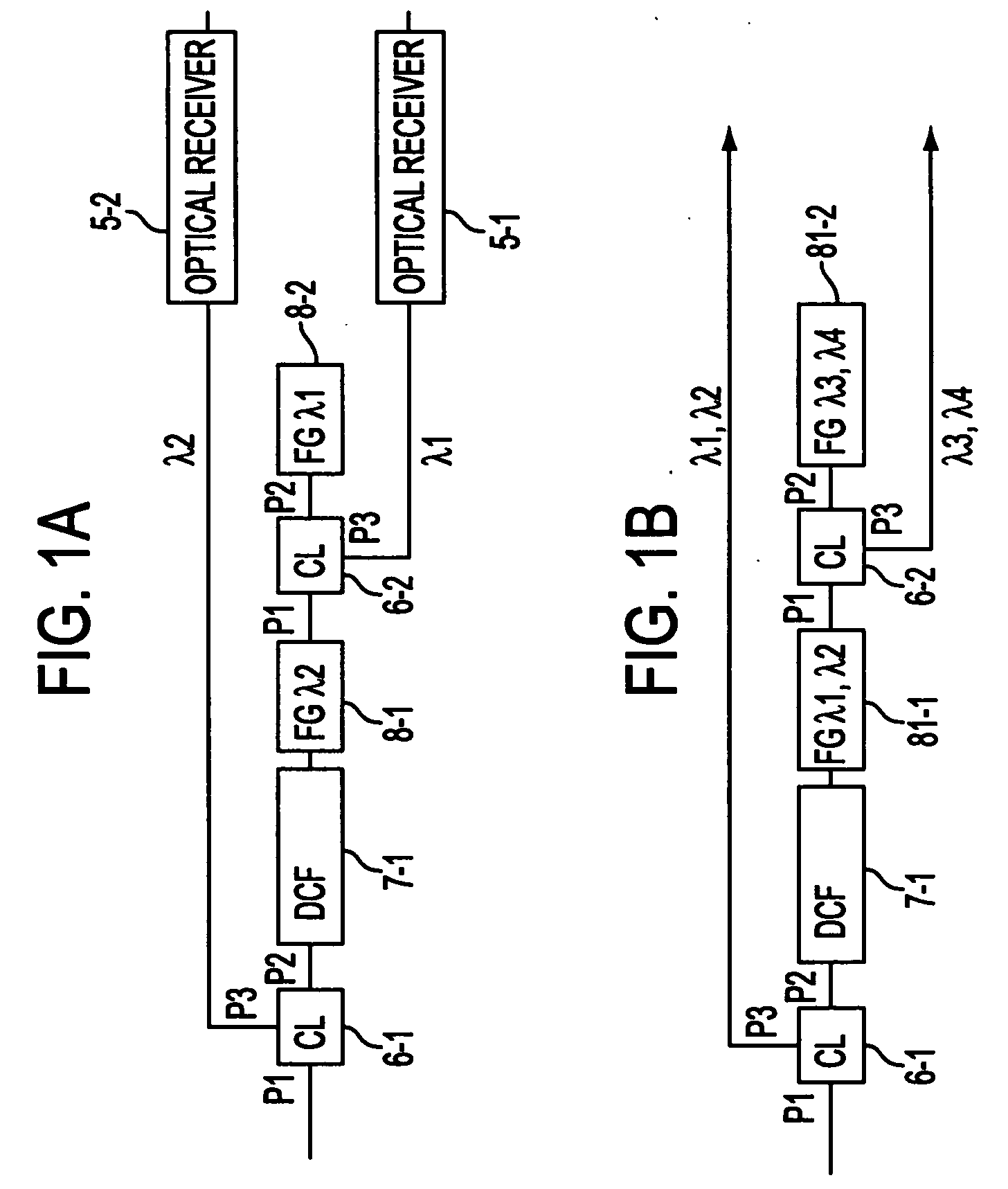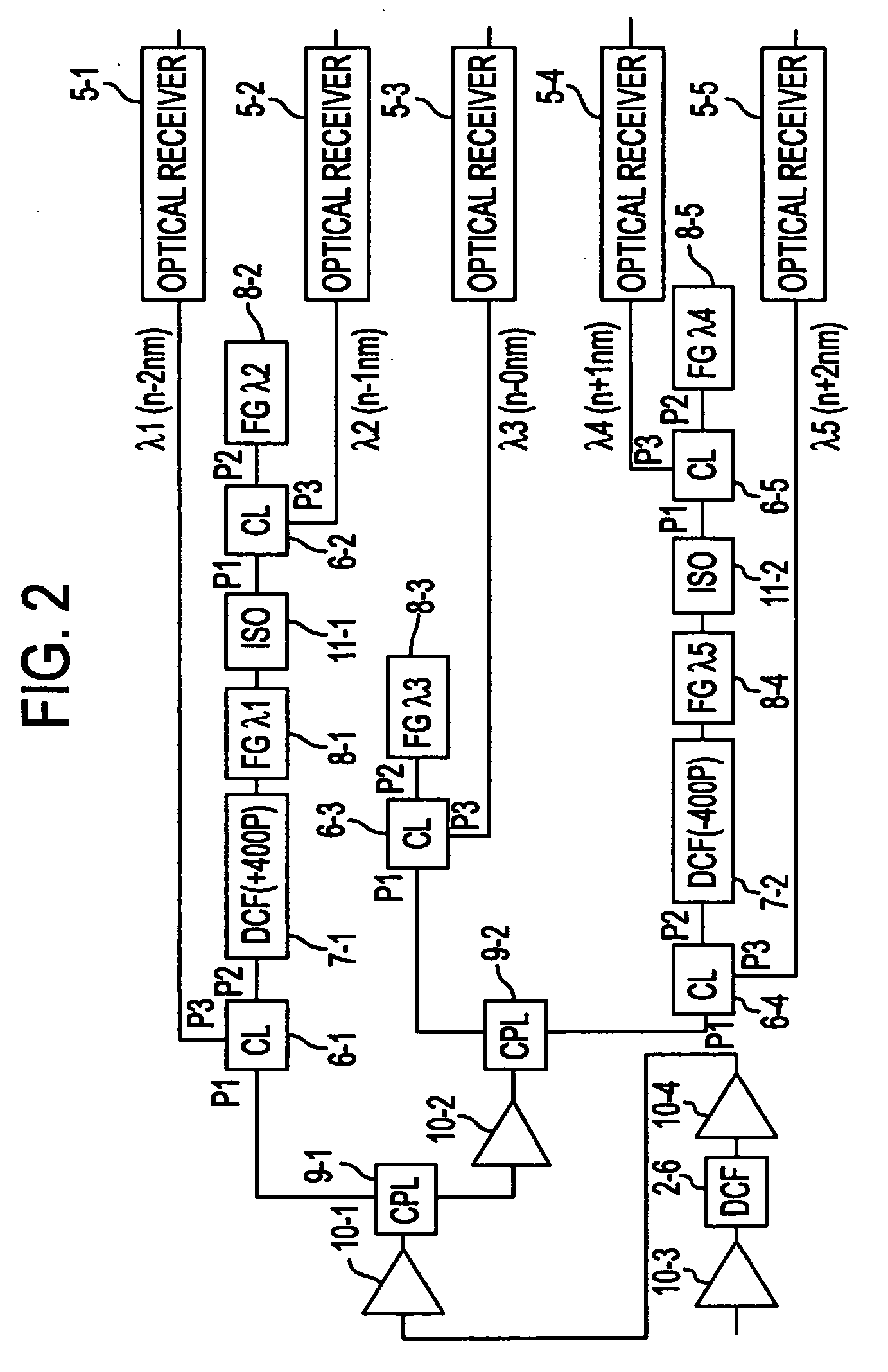Optical demultiplexer circuit and demultiplexer device and optical wavelength division multiplex circuit
- Summary
- Abstract
- Description
- Claims
- Application Information
AI Technical Summary
Benefits of technology
Problems solved by technology
Method used
Image
Examples
Embodiment Construction
[0042] Reference will now be made in detail to the preferred embodiments of the present invention, examples of which are illustrated in the accompanying drawings, wherein like reference numerals refer to like elements throughout.
[0043]FIGS. 1A and 1B respectively illustrate optical demultiplexer devices in accordance with embodiments of the present invention. As shown in FIGS. 1A and 1B, the optical demultiplexer devices include optical circulators 6-1 and 6-2, a dispersion compensator 7-1, and fiber grating filters 8-1, 8-2, 81-1, 81-2. As shown in FIG. 1A, optical receivers 5-1 and 5-2 receive light corresponding to the respective wavelengths of light λ1 and λ2, which are different wavelengths.
[0044] In operation of the optical demultiplexer device shown in FIG. 1A, first, light in which wavelength λ1 and wavelength λ2 have been wavelength division multiplexed is input at a first port P1 of a first optical circulator 6-1. The light input at the first port P1 of the first optical...
PUM
 Login to View More
Login to View More Abstract
Description
Claims
Application Information
 Login to View More
Login to View More - R&D
- Intellectual Property
- Life Sciences
- Materials
- Tech Scout
- Unparalleled Data Quality
- Higher Quality Content
- 60% Fewer Hallucinations
Browse by: Latest US Patents, China's latest patents, Technical Efficacy Thesaurus, Application Domain, Technology Topic, Popular Technical Reports.
© 2025 PatSnap. All rights reserved.Legal|Privacy policy|Modern Slavery Act Transparency Statement|Sitemap|About US| Contact US: help@patsnap.com



